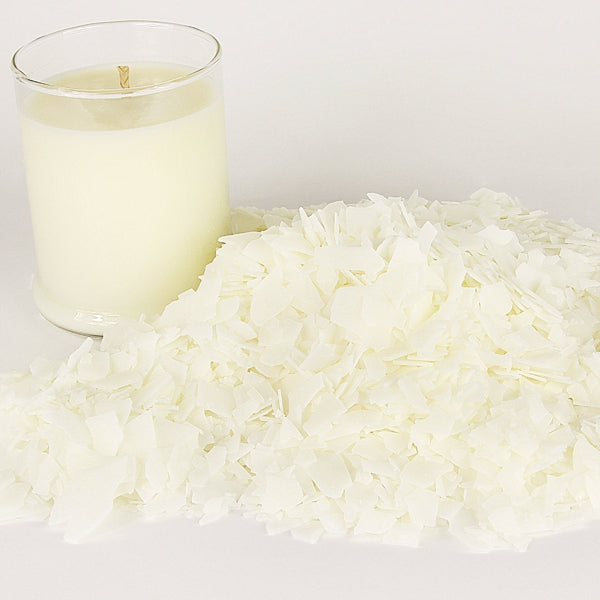Boost Your Area with Premium Soy Wax Candles and Home Fragrance
Boost Your Area with Premium Soy Wax Candles and Home Fragrance
Blog Article
From Wick to Wax: Comprehending the Chemistry Behind Soy Wax Candles and Their Environmental Impact
As we brighten our spaces with the warm radiance of candles, there exists a realm of complex chemistry behind the apparently easy act of lighting a soy wax candle light. The option in between soy and paraffin wax prolongs beyond plain visual appeals, diving right into the world of environmental impact and the very structure of the products. Understanding the molecular framework of soy wax and its burning procedure clarifies the exhausts launched into our surroundings. Join us as we decipher the scientific ins and outs behind soy wax candles and explore their implications on our environment.
Soy Wax Vs. Paraffin Wax
When contrasting soy wax and paraffin wax for candle making, it is crucial to recognize the distinct qualities and advantages of each product. Soy wax is an all-natural, sustainable resource stemmed from soybean oil, making it biodegradable and green - soy candles. On the other hand, paraffin wax is a byproduct of petroleum refining, which increases problems about its environmental impact and sustainability
Soy wax candle lights melt cleaner and give off less soot contrasted to paraffin wax candle lights, making them a healthier selection for interior air quality. Additionally, soy wax has a lower melting factor, permitting for a longer-lasting candle that spreads fragrance better. Paraffin wax, on the other hand, tends to melt faster and much less cleanly, possibly releasing harmful chemicals into the air.
From a sustainability viewpoint, soy wax is favored for its biodegradability and eco-friendly sourcing, straightening with the growing consumer preference for environmentally aware products. While paraffin wax has been a typical selection in candle light making because of its cost and simplicity of usage, the change towards green alternatives like soy wax is acquiring momentum in the sector.
Chemical Structure of Soy Wax

Combustion Refine in Soy Candles
The chemical composition of soy wax directly affects the burning process in soy candles, affecting factors such as burn time, fragrance launch, and ecological impact. When a soy candle light is lit, the heat from the fire thaws the wax near the wick. This fluid wax is then prepared the wick as a result of capillary action. As the fluid wax reaches the fire, it goes through and evaporates combustion. The combustion process involves the vaporized hydrocarbons in the wax reacting with oxygen airborne to create heat, light, water vapor, and carbon dioxide.
The burning efficiency of soy candle lights is affected by the purity of the soy wax and the top quality of the wick. A clean-burning soy candle light with a correctly sized wick will certainly minimize and produce a constant fire residue formation. This not just extends the shed time of the candle light however additionally boosts the launch of fragrances. In addition, soy wax candle lights have a lower ecological impact compared to paraffin candle lights because of their eco-friendly and biodegradable nature.

Ecological Advantages of Soy Wax

Considered a sustainable alternative to traditional paraffin wax, soy wax offers noteworthy environmental benefits that make it a preferred option among eco-conscious consumers. One significant advantage of soy wax is its eco-friendly sourcing. Soy wax is derived from soybean oil, which is predominantly cultivated in the USA. The growing of soybeans helps sustain neighborhood farmers and minimizes the dependence on non-renewable nonrenewable fuel sources utilized in paraffin wax production. Furthermore, soy wax is naturally degradable, indicating it damages down naturally without releasing hazardous contaminants right into the setting. This characteristic makes soy wax candles a much more environmentally friendly choice compared to paraffin wax candles, which are made from oil, a non-renewable source. In addition, soy wax burns cleaner and generates much less residue than paraffin wax, adding to better interior air top quality and lowering the need for cleansing and upkeep. In general, the ecological advantages of soy wax align with the growing demand for lasting and green items on the market.
Recycling and Disposal Factors To Consider
Reusing and correct disposal of soy wax candle lights play a critical duty in keeping environmental sustainability and lowering waste in families and my review here communities. When it involves recycling soy wax candles, the very first step is to make certain that the candle light has melted entirely. This can be attained by permitting the candle to melt till the wick is no longer usable, and after that allowing the staying wax cool and solidify. As soon as the wax has actually strengthened, it can be very carefully removed from the container.

In regards to disposal, if recycling is not a choice, soy wax candle lights are biodegradable and can be safely disposed of in many household waste systems. Nonetheless, it is constantly recommended to talk to neighborhood reusing facilities or waste monitoring solutions for certain standards on candle light disposal to make certain proper handling and ecological protection.
Conclusion
To conclude, the chemistry behind soy wax candle lights discloses their ecological benefits over paraffin wax candles. Soy wax, acquired from soybean oil, burns cleaner and creates much less soot when compared to paraffin wax. The burning process in soy candles is more efficient, causing a longer and extra even burn. Additionally, soy wax is renewable and naturally degradable, making it useful site a much more sustainable selection for candle production. Recycling and correct disposal of soy wax candle lights additionally add to their environmental effect.
When comparing soy wax and paraffin wax for candle light production, it is essential to recognize the unique qualities and benefits of each material (home fragrance).Soy wax candle lights shed cleaner and emit much less residue compared to paraffin wax candle lights, making them a healthier option for indoor air top quality.Considered a sustainable alternative to traditional paraffin wax, soy wax offers significant environmental benefits that make it a popular option among eco-conscious customers. Soy wax burns cleaner and generates less residue than paraffin wax, contributing to far better indoor air top quality and reducing the demand for cleansing and upkeep.In conclusion, the chemistry behind soy wax candle lights reveals their environmental benefits over paraffin wax candles
Report this page